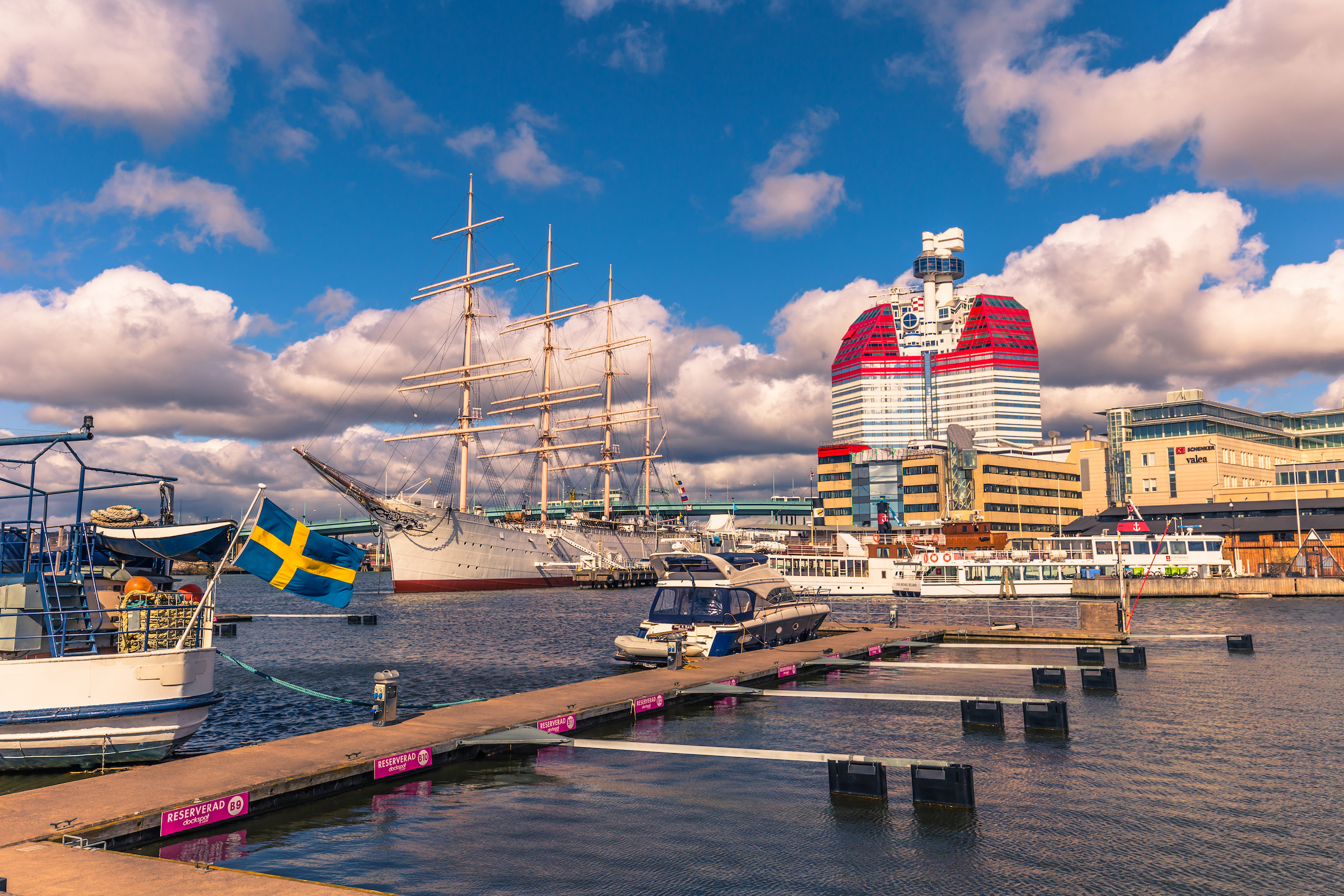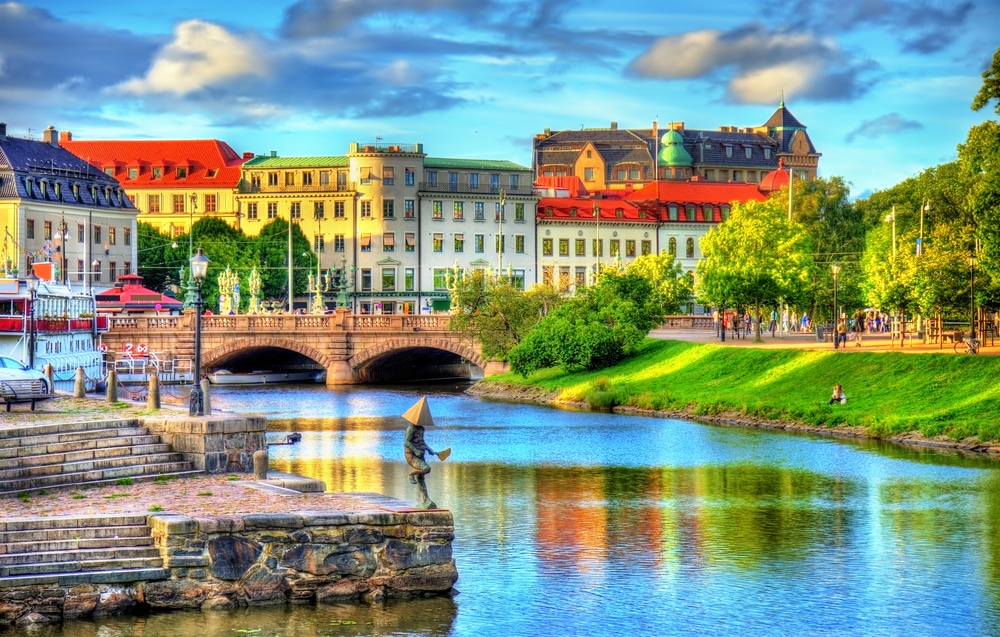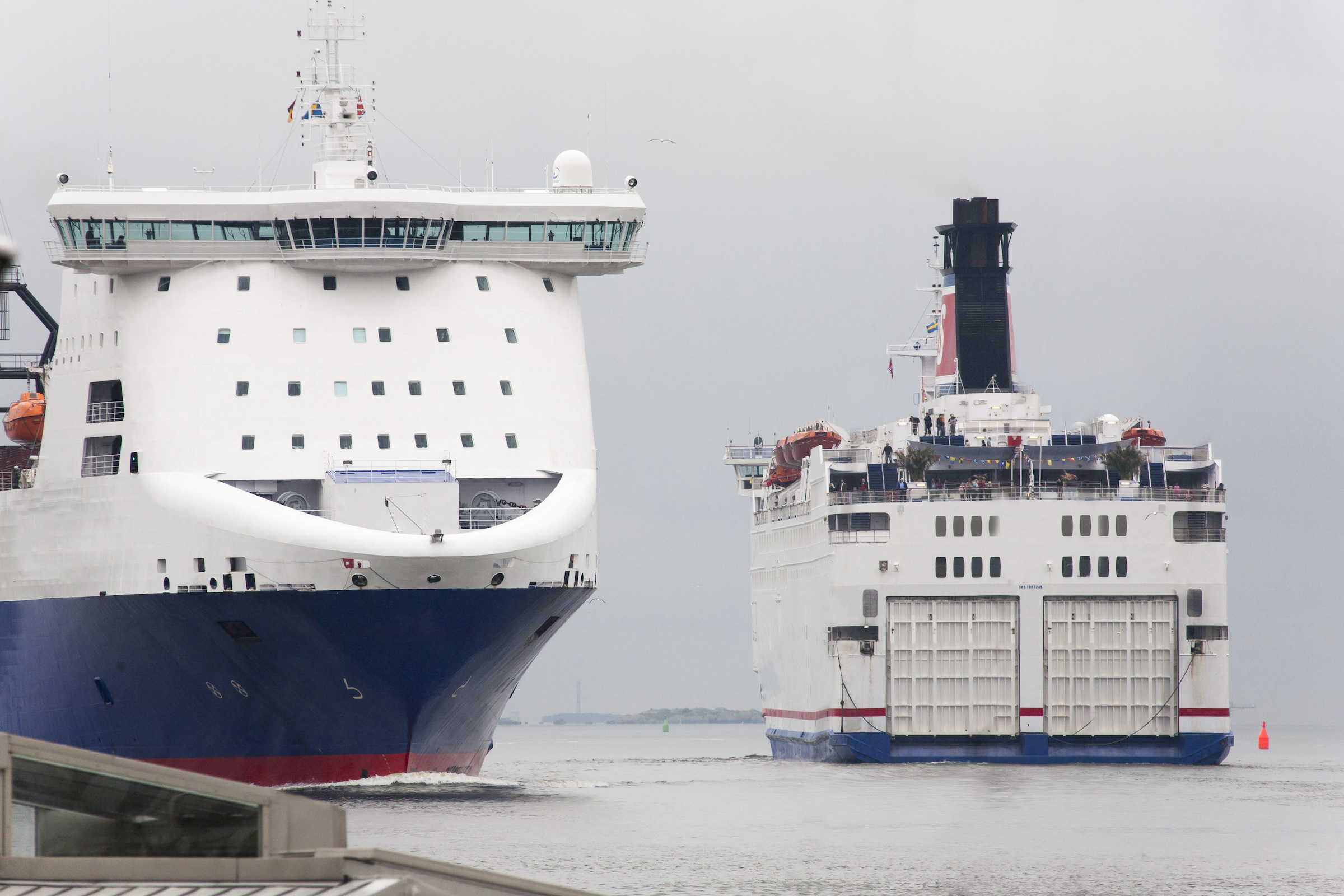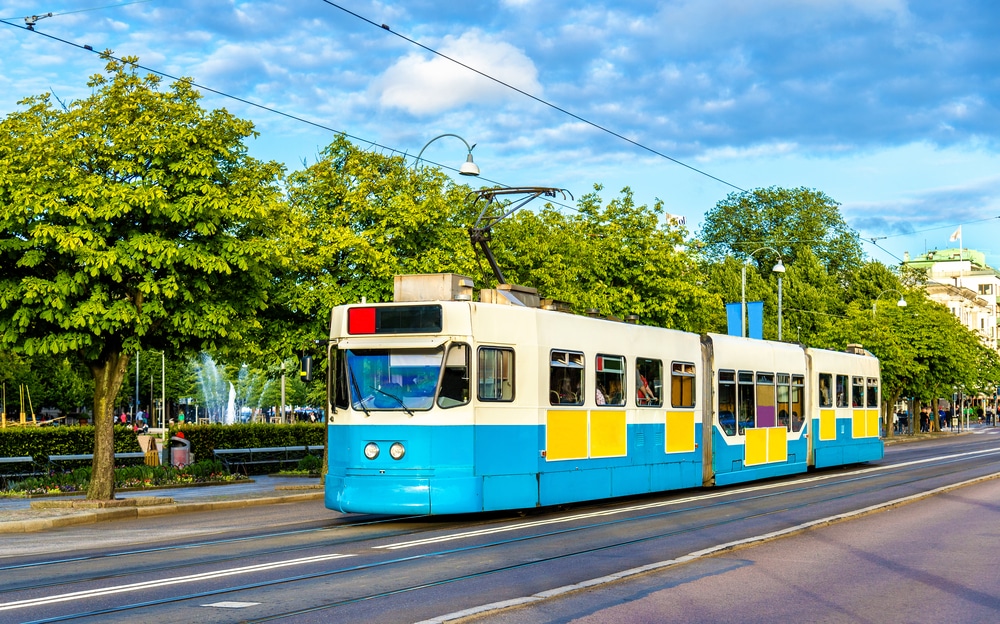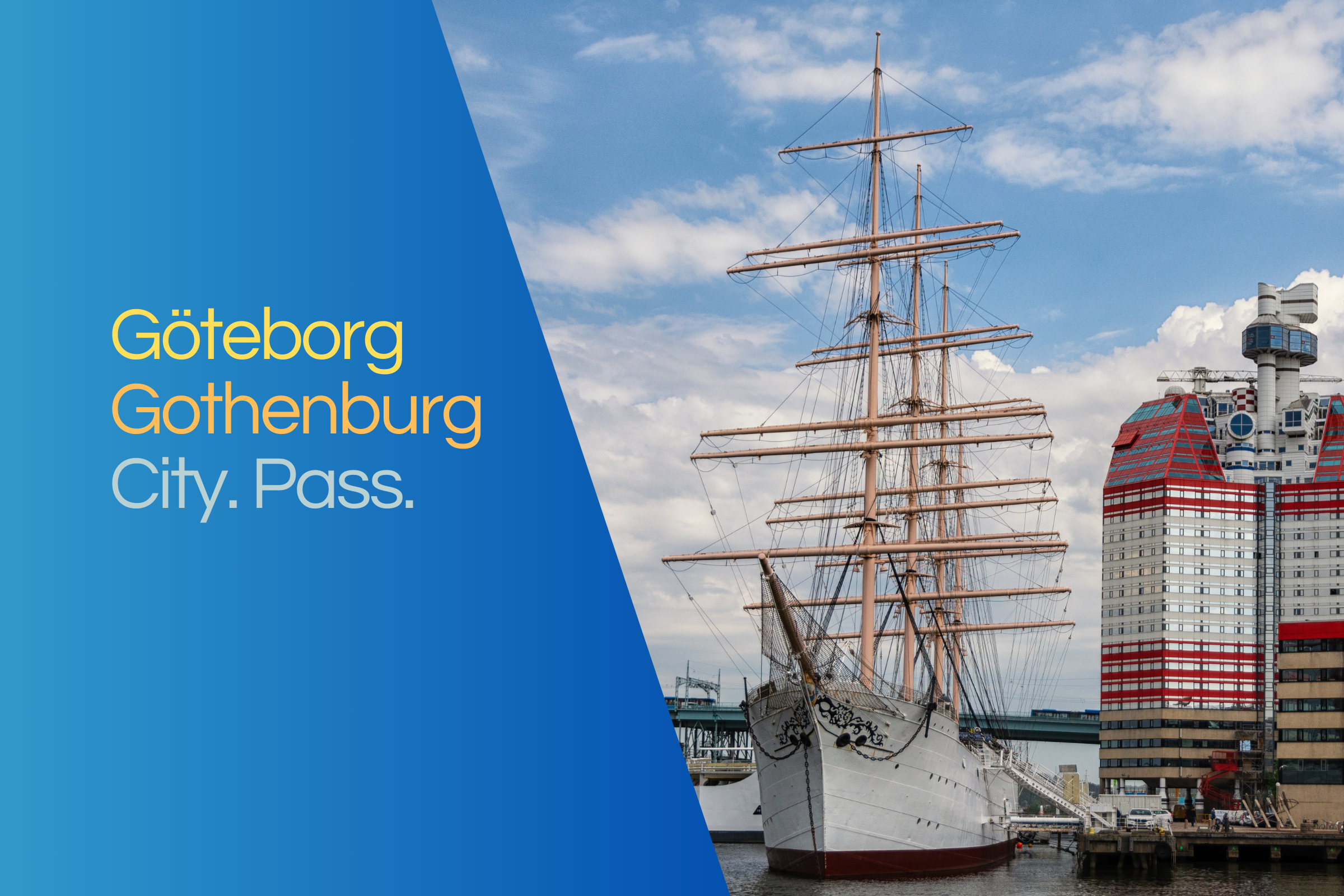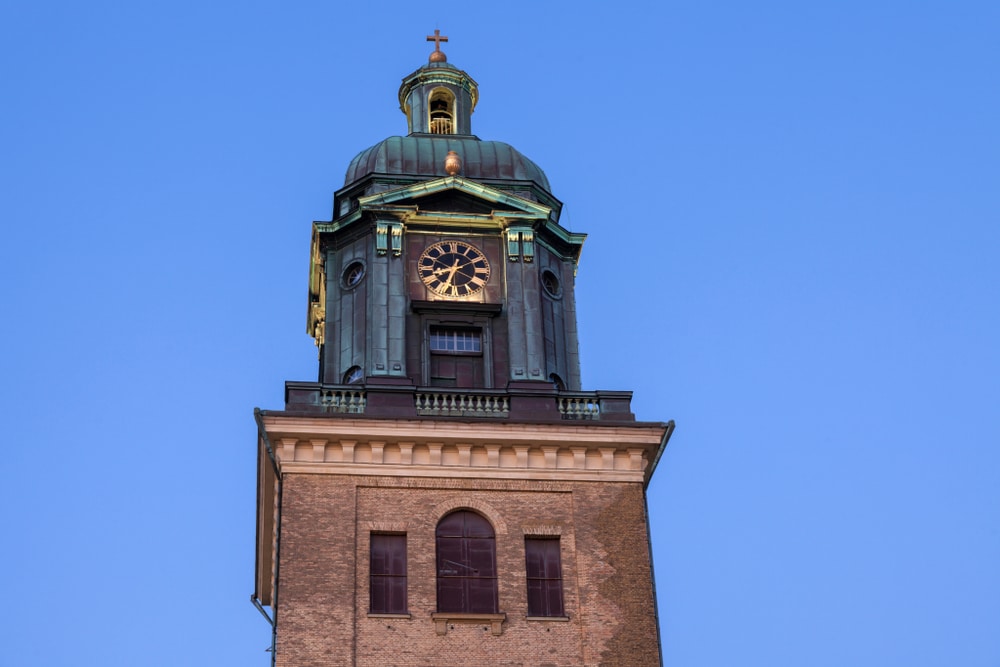- Home ›
- Sweden ›
- Gothenburg
Skansen Crown
On Gothenburg's Risåsberg in the trendy Haga district stands one of the landmarks of the western Swedish metropolis: Skansen Kronan, the fortified tower of a fortification from the end of the 17th century.
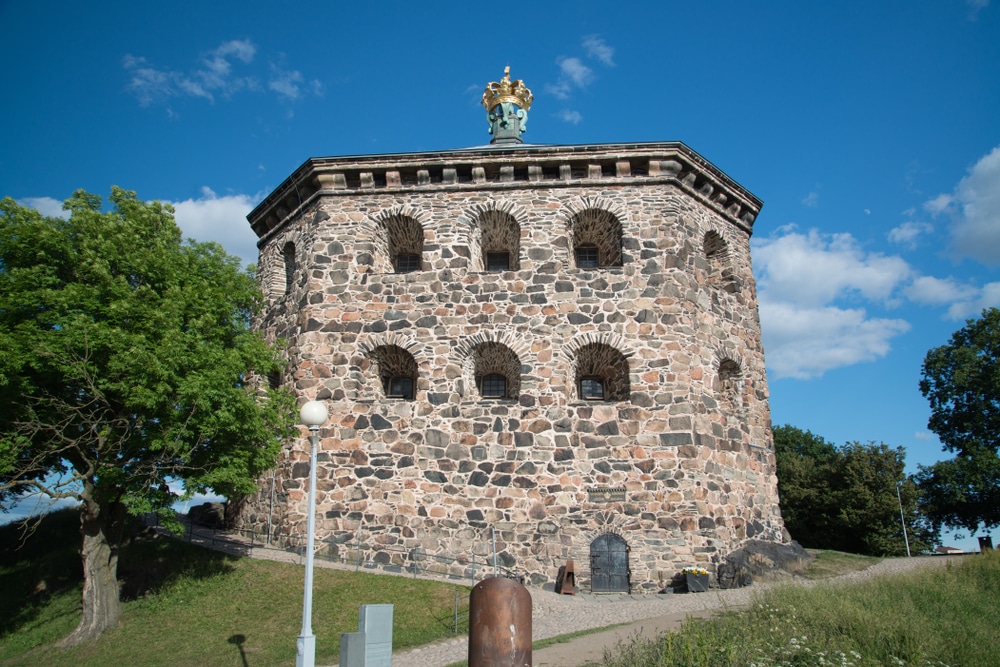
As early as around 1650, on the orders of Gustav II Adolf and under the direction of Olof Örnehufvud and Johan Wärnschiöldh, there were the first fortifications on the mountain, which was cleared at the same time to have better visibility and a clear field of fire in case of defence. At that time, the threat from the Danish Empire was immediate; from 1655 to 1660, there were two wars between Denmark and Sweden that would go down in history as parts of the Second Nordic War and redistribute the balance of power in the North and Baltic Sea regions.
Gothenburg was directly facing Denmark due to its location and was therefore in a particularly exposed position, which was to be held at all costs for strategic reasons (thus the city on the shore of the Göta älv represented Sweden's only Kattegat access for a long time, as both the areas south and north were part of the Danish-Norwegian conglomerate state). In 1687, the Swedish King Charles XI approved Erik Dahlbergh's new plans for Gothenburg, which envisaged a fortification with two redoubts: the prominent Skansen Kronan, i.e. the Crown Redoubt, and the somewhat lower Skansen Westgötha Leijon(West Gothic Lion), today Skansen Lejonet, the Lion Redoubt; in addition, mighty protective walls and a moat.
From Skansen Kronan only the mighty defence tower has survived, which has now taken over the name of the whole complex. The tower has an octagonal ground plan with alternating shorter and longer sides and consists of four storeys. The first storey housed soldiers, cannonballs were cast and - a dangerous mixture - gunpowder was stored. On floors two and three, cannons were posted to fire from a total of 40 openings on two levels; the fourth floor was equipped with embrasures for artillery. After its completion, up to 27 cannons were stationed in the redoubt. The walls were up to seven metres thick and built of fieldstone; the upper finishes were made of granite. Since 1697, a gilded, wooden crown (which has been replaced and redesigned several times) has formed the 33-metre-high building's finial, visible from afar.
Until the beginning of the 18th century, there was a fortified passageway from the redoubt in front of it, protected on both sides by moats, to the secured Gothenburg itself as well as to other defensive buildings such as the bastion Christina Regina (named after Queen Christina, daughter of Gustav II Adolf); in the course of the demolition of the city wall and defensive buildings and the development of the area with the typical settlement houses of the region - below made of solid stone, above of the far more favourable wood - this caponniere also disappeared. The Kronenschanze was never involved in warlike conflicts.
In 1839, the royal gate of Skansen Kronen was demolished; in its place, an entrance that still exists today was decorated with two stone lions. In 1854 the building was temporarily used as a prison when 200 prisoners from Marstrand were transferred here. In 1874, the people of Gothenburg began to use Skansen Kronan as an emergency shelter, because the construction activity of the rapidly growing port city was not sufficient to provide a roof over the heads of all the inhabitants.
From 1900 Risåsberg was transformed; the redoubt was renovated, redundant buildings were demolished, new paths were laid out and planting began, culminating in the creation of the two-hectare Skansparken, or Redoubt Park, in 1912, which surrounds Skansen Kronan and is used by Gothenburgers and visitors to the city alike for walks and picnics. In the tower building itself, a military museum opened in 1904 with uniforms and historical weapons. In 1925, the city purchased Risåsberg from the Swedish state; Skansen Kronan itself, however, is operated as a Byggnadsminne (roughly: monument) by the State Property Administration. After 100 years, the military museum was closed in 2004, and the exhibits are stored in the municipal museum's storeroom.
Skansen Kronan is currently a popular tourist destination, with a café in the former soldiers' quarters at the foot of the tower, which is now popular with walkers. The view from Schanzenberg over the city offers a fine view of the prestigious commercial metropolis, but also the more relaxed old town of Haga, where students, artists, average Gothenburgers and visitors stroll through the extensive pedestrian zone, drink coffee and enjoy the atmosphere of a largely preserved 17th- and 18th-century urban ensemble. The building itself serves as an exceptional venue for events. In addition to regular guided tours in German, English and Swedish, thematic tours on the history of the redoubt, "crime and punishment", Gothenburg's underworld or military affairs can be booked for groups of people in these languages. In the Haga Nygata 10E in the middle of the city district of the same name is the museum shop of Skansen Kronan, where you can buy the tickets and get more information about the facility with a Swedish coffee.
